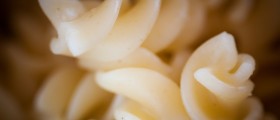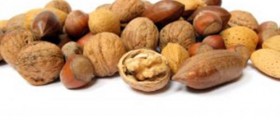
Definition of a Food Guide Pyramid
Food guide pyramid is a term used for a certain type ofguide in the form of a triangle which is further divided into varioussections whose purpose is to show the recommended intake for numerous differenttypes of food groups. Certain sources show that the first food guide pyramid was published inSweden during the seventies, but the one which is the most widely known comes from the United States Department of Agriculture. The latest revision of thisversion of food guide pyramid has been revised in 2011.
History of a Food Guide Pyramid
The idea of a triangle which displays basic food groups andthe daily requirements was first introduced by the National Board of Health andWelfare in Sweden during 1972. The whole idea was first carried out in amagazine two years later. The initial pyramid had basic foods at its base,while the rest of it was occupied by other supplemental types of foods of bothanimal and vegetable origin. The pyramid was considered as a very importantrival to the dietary circle which was already used by the National Board.Throughout the years, Sweden’s National Board slowly distanced from the conceptof food guide pyramid as it grew on its own and soon became well established inthe surrounding countries and then later even in some other developedcountries. The first established food guide pyramid in the United States wasintroduced in 1992. This pyramid featured six horizontal sections whichcontained pictures of different food items from its respective food groups. Thefirst update comprised vertical wedges which replaced the horizontal sections.
Statistics and Controversy
There are not that many people who are aware of theterrifying fact that there are more than 60 percent of citizens of the United Stateswho are medicinally classified as overweight or obese. They are constantlyexposed to a significantly higher risk of serious medical conditions such ashypertension, diabetes and heart disease, among others. Numerous scientificsources claim that the food guide pyramid is simply not updated according tothe latest research and developments in the field of dietetics. There arecertain dietary choices permitted by the pyramid which can lead to certainmedical conditions.
Another big problem regarding the original pyramid is that itdoes not have the much needed differentiation for the group of foods rich inprotein. The pyramid also suggests that one should not eat trans fatty acids and saturated fats in largeamounts since these might trigger certain medical conditions.Hydrogenated fats, trans fatty acid sand saturated fats indeed do need to beavoided as much as possible, but there are unsaturated fats which are veryefficient in lowering the levels of cholesterol and sugar in the blood.
One more problem is the fact that there is no differentiation between simple and complexcarbohydrates. There are certain food items which should be transferred fromthe protein category to pasta, grains, bread or vegetables category. Somesources claim that fish should be a completely new, separate category. Alldairy products need to be ingested either in low fat or no fat form, because nohuman being requires them in full fat form, and that is another contradictionwhen it comes to the food guide pyramid. There is also a general misconceptionand misunderstanding concerning the definition of a serving size, which isanother big issue regarding food guide pyramids. There are certain alternativeversions of the food guide pyramid such as the Healthy eating pyramidintroduced by the Harvard School of Public Health or various vegetarian andvegan versions of the food guide pyramid.
Food Groups
Carbohydrates provide the human body with the much neededenergy. It is widely known that those who ingest too many carbohydrates mayhave problems with the levels of sugar in their blood and other medicalcomplications.
Vegetables are plants which are not sweet and generally includeflowers, roots and stems but mostly do not include herbs, spices, nuts,fruits or grains. Vegetables are known for being among the most importantsources of various different types of essential minerals, vitamins and otherimportant nutrients. They are also usually characterized by rather low contentof calories and fats.
Fruits are also parts of the plants, but unlikevegetables, they are usually sweet. They are an excellent source of vitamins,fibers and natural types of sugar, and in most cases they contain fats andcalories in small amounts. They can often be combined with food items fromthe vegetable group.
Oils and fats can be consumed but preferably in small amounts because they lead to serious medical conditions.
Dairy products arederived from the milk of various different types of mammals. They also providevarious different types of nutrients.
Meat is muscle tissue of animals which isjam packed with proteins and several other sorts of nutrients. There arealternatives to meat for those who prefer not to consume it.

















Your thoughts on this
Loading...